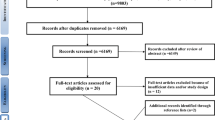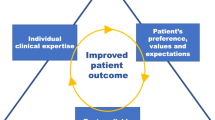Abstract
The objectives of this study are to determine the current treatment policies of UK shock-wave lithotripsy centres. Fixed-site lithotripter centres in the UK were identified via the national Therapeutic Interventions for Stones of the Ureter (TISU) study (n = 25). Questionnaires were completed regarding current SWL protocols for each centre, including management of anticoagulation, use of antibiotics and analgesia, urine testing, pacemakers, and arterial aneurysms. Data were collected regarding service delivery. Responses were obtained for 21 centres. Most centres use the Storz Modulith (85.7 %). Wide variation was observed in clinical contraindications to SWL, with 47.6 % centres performing SWL in patients with an abdominal aortic aneurysm, 66.7 % performing SWL in patients with a pacemaker, and 66.7 % of centres not performing SWL in asymptomatic patients with a urine dipstick positive for nitrites and leucocytes. The management of anticoagulation pre- and post-SWL showed wide variation, with the omission of anticoagulation ranging from 0 to 10 days pre-SWL. Seventeen distinct analgesia regimens were reported and prophylactic antibiotics are routinely administered in 25.0 % of centres. Tamsulosin is prescribed to all patients in 20.0 % of centres and a further 15.0 % of centres routinely prescribe tamsulosin post-SWL of ureteric stones. The included centres undertake SWL a median of 4 days per week and treat a median of six patients per list. Emergency SWL is unavailable in 30.0 % of centres. This observational real-life study has identified a significant disparity in the delivery of SWL throughout the UK, despite high numbers of patients with renal and ureteric stones being treated with this modality. Further studies should address the key areas of controversy, including an assessment of technical training, and facilitate the development of national guidelines to ensure a high level of standardized care for SWL patients.



Similar content being viewed by others
References
Turney BW, Reynard JM, Noble JG, Keoghane SR (2011) Trends in urological stone disease. BJU Int 109:1082–1087
Curhan GC (2007) Epidemiology of stone disease. Urol Clin North Am 34:287–293
Romero V, Akpinar H, Assimos DG (2010) Kidney stones: a global picture of prevalence, incidence, and associated risk factors. Rev Urol 12:e86–e96
Streem SB, Yost A (1990) Extracorporeal shock wave lithotripsy in patients with bleeding diatheses. J Urol 144:1347–1348
Fischer C, Wöhrle J, Pastor J, Morgenroth K, Senge T (2007) Extracorporeal shock-wave lithotripsy induced ultrastructural changes to the renal parenchyma under aspirin use. Electron microscopic findings in the rat kidney. Urologe A 46:150–155
Schnabel MJ, Gierth M, Bründl J, Chaussy CG, Burger M, Fritsche H-M (2014) Antiplatelet and anticoagulative medication during shockwave lithotripsy. J Endourol 28:1034–1039
Bierkens AF, Hendrikx AJ, Ezz el Din KE et al (1997) The value of antibiotic prophylaxis during extracorporeal shock wave lithotripsy in the prevention of urinary tract infections in patients with urine proven sterile prior to treatment. Eur Urol 31:30–35
Deliveliotis C, Giftopoulos A, Koutsokalis G, Raptidis G, Kostakopoulos A (1997) The necessity of prophylactic antibiotics during extracorporeal shock wave lithotripsy. Int Urol Nephrol 29:517–521
Honey RJD, Ordon M, Ghiculete D, Wiesenthal JD, Kodama R, Pace KT (2013) A prospective study examining the incidence of bacteriuria and urinary tract infection after shock wave lithotripsy with targeted antibiotic prophylaxis. J Urol 189:2112–2117
Lu Y, Tianyong F, Ping H, Liangren L, Haichao Y, Qiang W (2012) Antibiotic prophylaxis for shock wave lithotripsy in patients with sterile urine before treatment may be unnecessary: a systematic review and meta-analysis. J Urol 188:441–448
Gravina GL, Costa AM, Ronchi P et al (2005) Tamsulosin treatment increases clinical success rate of single extracorporeal shock wave lithotripsy of renal stones. Urology 66:24–28
Naja V, Agarwal MM, Mandal AK et al (2008) Tamsulosin facilitates earlier clearance of stone fragments and reduces pain after shockwave lithotripsy for renal calculi: results from an open-label randomized study. Urology 72:1006–1011
Bhagat SK, Chacko NK, Kekre NS (2007) Is there a role for tamsulosin in shock wave lithotripsy for renal and ureteral calculi? J Urol 177:2185–2188
Wang H, Liu K, Ji Z, Li H (2010) Effect of alpha1-adrenergic antagonists on lower ureteral stones with extracorporeal shock wave lithotripsy. Asian J Surg 33:37–41
Zhu Y, Duijvesz D, Rovers MM, Lock TM (2010) alpha-Blockers to assist stone clearance after extracorporeal shock wave lithotripsy: a meta-analysis. BJU Int 106:256–261
Hussein MM (2010) Does tamsulosin increase stone clearance after shockwave lithotripsy of renal stones? A prospective, randomized controlled study. Scand J Urol Nephrol 44:27–31
Singh SK, Pawar DS, Griwan MS, Indora JM, Sharma S (2011) Role of tamsulosin in clearance of upper ureteral calculi after extracorporeal shock wave lithotripsy: a randomized controlled trial. Urol J 8:14–20
Zheng S, Liu LR, Yuan HC (2010) Tamsulosin as adjunctive treatment after shockwave lithotripsy in patients with upper urinary tract stones: a systematic review and meta-analysis. Scand J Urol Nephrol 44:425–432
Falahatkar S, Khosropanah I, Vajary AD, Bateni ZH, Khosropanah D, Allahkhah A (2011) Is there a role for tamsulosin after shock wave lithotripsy in the treatment of renal and ureteral calculi? J Endourol 25:495–498
Pickard R, Starr K, MacLennan G et al (2015) Medical expulsive therapy in adults with ureteric colic: a multicentre, randomised, placebo-controlled trial. Lancet. doi:10.1016/S0140-6736(15)60933-3 (Epub ahead of print)
Carey SW, Streem SB (1992) Extracorporeal shock wave lithotripsy for patients with calcified ipsilateral renal arterial or abdominal aortic aneurysms. J Urol 148:18–20
Deliveliotis C, Kostakopoulos A, Stavropoulos N, Karagiotis E, Kyriazis P, Dimopoulos C (1995) Extracorporeal shock wave lithotripsy in 5 patients with aortic aneurysm. J Urol 154:1671–1672
Platonov MA, Gillis AM, Kavanagh KM (2008) Pacemakers, implantable cardioverter/defibrillators, and extracorporeal shockwave lithotripsy: evidence-based guidelines for the modern era. J Endourol 22:243–247
Picozzi S, Ricci C, Gaeta M, Casellato S (2012) Urgent shock wave lithotripsy as first-line treatment for ureteral stones: a meta-analysis of 570 patients. Urol Res 40:725–731
Okada A, Yasui T, Taguchi K, Nilmi K, Hirose Y, Hamamoto S, Ando R, Kubota Y, Umemoto Y, Tozawa K, Sasaki S, Hayashi Y, Kohri K (2013) Impact of official technical training for urologists on the efficacy of shock wave lithotripsy. Urolithiasis 41:487–492
Author information
Authors and Affiliations
Corresponding author
Ethics declarations
Conflict of interest
None of the authors have any conflict of interests to declare.
Ethical approval
This article does not contain any studies with human participants performed by any of the authors.
Funding
No funding received.
Rights and permissions
About this article
Cite this article
Sharma, N.L., Alexander, C.E., Grout, E. et al. Shock-wave lithotripsy: variance within UK practice. Urolithiasis 45, 193–201 (2017). https://doi.org/10.1007/s00240-016-0886-5
Received:
Accepted:
Published:
Issue Date:
DOI: https://doi.org/10.1007/s00240-016-0886-5




